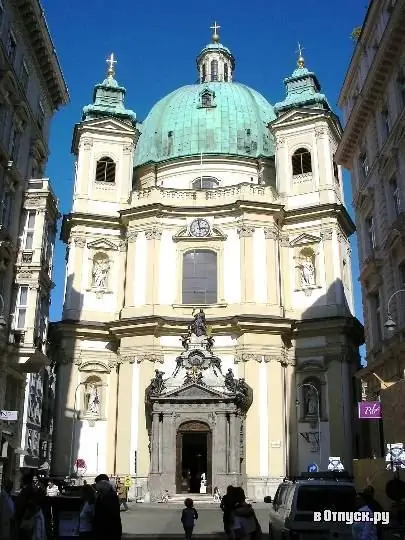
Description of the attraction
St. Peter's Church is one of the oldest and most beautiful churches in the Austrian capital. The church was founded on the site of an ancient Christian temple in 792 by order of the Emperor Charlemagne. The old church did not survive, so in its place the construction of a new church began in 1701 under the leadership of Gabriele Montani, who was later replaced by Johann Lucas von Hildebrandt. By 1722, most of the building was completed, and in 1733 the church was inaugurated. The construction of the church was started by order of Leopold I.
Under Hildebrandt's control, a church building was built, which in its appearance is very similar to the Church of St. Peter in Rome. The building of the church is unusual both in its architecture (oval shape) and in its color scheme: the dome is made in emerald color. In addition to Lucas Hildebrandt, Andrea Altomonte worked on the construction of the church, under whose leadership the portal extension was erected. The building is made in the Baroque style, which looks very organic and solemn in this place.
The interior of the church was created by Matthias Stein, the frescoes were painted by the famous Italian artist Andrea Pozzo. However, after Pozzo's death, in 1713, Johann Michael Rottmaer began decorating the interior to his liking.
On the triumphal arch you can see the coat of arms of Emperor Leopold I. The baroque altar was created by Antonio Galli Bibieno and Martin Altomonte.
Over the years, the paintings gradually darkened, and the interior began to take on a gray color. From 1998 to 2004, a large-scale reconstruction was carried out in the church, which returned the paintings to their original appearance.






